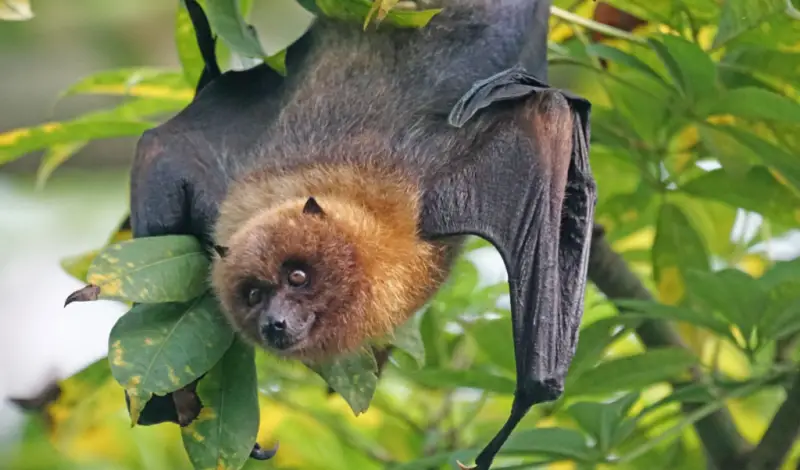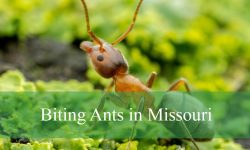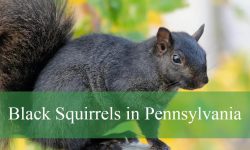Texas has always been a land of vast landscapes, diverse wildlife, and unforgettable sunsets—but one of its most fascinating residents often goes unnoticed: the bat. These winged mammals fill the night skies across the Lone Star State, hunting insects, pollinating flowers, and performing essential ecological services that benefit both people and nature. Despite their importance, bats remain shrouded in mystery and misconception.
Texas is home to more bat species than any other state in the U.S., and hosts the world’s largest colonies. Yet, few Texans realize how vital bats are to the state’s economy, environment, and biodiversity. From hidden caves to bustling bridges, bats are everywhere—but they still hold many secrets that even lifelong residents have never heard.
In this in-depth article, we’ll uncover those secrets—from how bats shape Texas agriculture and tourism to the surprising ways they coexist with humans in cities and farms. By the end, you’ll see these nocturnal creatures in a completely new light.
Texas: The Bat Capital of the United States

A State Full of Bat Diversity
When it comes to bat diversity, Texas stands unrivaled. With 33 species of bats—nearly three-quarters of all found in the U.S.—the state’s varied geography provides ideal habitats for nearly every type of bat imaginable. From the desert caves of the west to the piney woods of the east, each region supports unique species adapted to its environment.
Common species include the Mexican free-tailed bat (Tadarida brasiliensis), Big Brown Bat (Eptesicus fuscus), Eastern Red Bat (Lasiurus borealis), and Tri-colored Bat (Perimyotis subflavus). These species differ not only in appearance and behavior but also in where they choose to live.
Desert canyons and limestone caverns serve as perfect roosts for cave-dwelling bats, while forests and urban areas host tree- or building-roosting species. This incredible adaptability explains why bats thrive from the Panhandle plains to the Gulf Coast.
The World’s Largest Mammal Colony
Few people realize that Texas hosts the largest concentration of mammals on the planet. Located near San Antonio, Bracken Cave is home to over 20 million Mexican free-tailed bats. Each evening in summer, the colony pours out of the cave entrance in an undulating black ribbon stretching across the sky—a breathtaking sight visible even on radar.
These bats travel hundreds of miles from Mexico to Texas each spring, returning to the same roosts every year to give birth and raise their young. Bracken Cave is not just a natural wonder; it’s a global symbol of successful wildlife conservation, thanks to the protection efforts of Bat Conservation International (BCI).
The Famous Austin Bridge Colony
In downtown Austin, beneath the Congress Avenue Bridge, more than 1.5 million bats roost during summer months. What began as a structural quirk—narrow crevices formed during bridge renovation—became one of the world’s most famous urban bat colonies.
At sunset, locals and tourists gather along the bridge and riverbanks to witness the bats emerge. The phenomenon generates millions of dollars in tourism revenue each year, proving that bats can peacefully coexist with humans while boosting local economies.
Hidden Superpowers of Texas Bats
Nature’s Best Pest Control Agents
If there’s one secret that Texans should know, it’s that bats are their most effective natural pest controllers. A single bat can eat up to 1,000 insects in an hour, targeting crop-damaging pests like corn earworms, cutworms, beetles, and mosquitoes.
According to researchers, the economic value of this pest control service is estimated at $1.4 billion annually for Texas farmers alone. Without bats, agriculture would suffer greater pest damage, leading to more pesticide use, lower yields, and higher food prices.
Farmers across Central and South Texas have come to appreciate the silent army that takes flight every night. By conserving roosts and reducing pesticide spraying, they help sustain bat populations while benefiting their crops.
Pollinators of the Night
Another lesser-known fact is that not all bats eat insects—some serve as important pollinators. Nectar-feeding species such as the Mexican long-tongued bat (Choeronycteris mexicana) and the Mexican long-nosed bat (Leptonycteris nivalis) pollinate night-blooming plants like agave and various cacti.
Without these nocturnal pollinators, certain desert plants would struggle to reproduce. These bats play an unsung role in maintaining Texas’s native ecosystems and even influence human industries like tequila production, since agave plants depend on bat pollination in their native range.
Seed Dispersers and Ecosystem Architects
Fruit-eating bats, though less common in Texas, also perform crucial roles. By consuming fruits and dispersing seeds, they help regenerate forests and maintain plant diversity. In regions like the Rio Grande Valley, bats aid the spread of native plants that provide food and shelter for other wildlife.
Bats are, in essence, ecosystem architects—shaping landscapes silently under the cover of night.
Myths, Facts, and Surprising Truths
Busting the Vampire Myth
Despite popular myths, no vampire bats exist in Texas. All local species are either insectivorous, frugivorous, or nectarivorous. Vampire bats are confined to parts of Central and South America.
Texas bats are not dangerous, aggressive, or bloodthirsty. In fact, most are shy creatures that avoid human contact entirely. Misconceptions about bats being “disease-carrying pests” often stem from fear rather than fact.
The Fastest Mammal on Earth
The Mexican free-tailed bat, Texas’s most iconic species, is capable of astonishing speed. Studies suggest it can reach flight speeds over 100 miles per hour, making it possibly the fastest mammal on the planet. These bats also fly at extreme altitudes, chasing migrating insects thousands of feet above the ground.
They use echolocation—ultrasonic calls bounced off surrounding objects—to hunt insects in complete darkness. Their ability to detect a moth’s fluttering wings in total night conditions showcases one of evolution’s most extraordinary sensory adaptations.
Social but Solitary Hunters
Bats are highly social animals when roosting—they gather in colonies of thousands or even millions. However, during foraging hours, they hunt independently. Each bat has a specific feeding range, avoiding overlap with its colony mates.
This efficient division of labor ensures maximum food capture and minimal competition, demonstrating remarkable coordination within colonies that operate like aerial cities.
Threats Facing Texas Bats
Wind Turbines and Habitat Loss
While bats have thrived in Texas for millennia, modern development poses new threats. Wind farms, though vital for renewable energy, have unintentionally become a major hazard. Migratory bats, particularly Mexican free-tailed and hoary bats, collide with turbine blades during seasonal flights.
Additionally, urban sprawl destroys old trees and caves that serve as natural roosts. Many bats are forced to move into buildings or bridges, which may not always be safe or suitable.
White-Nose Syndrome
The deadly fungal disease white-nose syndrome (WNS), responsible for millions of bat deaths across North America, has reached parts of Texas. The fungus thrives in cool, humid caves where hibernating bats are most vulnerable. Though Texas’s warmer climate limits its spread, the disease still poses a serious risk to species like the tricolored bat and little brown bat.
Pesticide Exposure and Light Pollution
The use of chemical pesticides reduces insect populations—bats’ main food source—and poisons them through contaminated prey. Meanwhile, light pollution disrupts nocturnal feeding patterns and migration. Bright artificial lights around cities confuse bats, reducing their efficiency and altering their natural behavior.
Protecting bats requires balancing development with conservation—a challenge Texas continues to navigate.
Conservation Successes and Local Efforts
The Austin Bat Phenomenon
Few conservation stories are as inspiring as Austin’s. When bats first appeared under the Congress Avenue Bridge in the 1980s, residents were alarmed. Many wanted them exterminated. But after education campaigns led by Bat Conservation International, public opinion shifted.
Today, the colony is celebrated as a city icon. The nightly bat flights attract over 100,000 visitors annually, generating millions in tourism revenue. Austin proudly calls itself the “Bat Capital of the World.”
Bracken Cave and Bat Conservation International
Bat Conservation International (BCI), based in Austin, has played a vital role in protecting bat habitats across Texas and beyond. The organization purchased Bracken Cave and surrounding lands to safeguard the world’s largest bat colony.
Their efforts extend beyond Texas, advocating for responsible wind energy placement, bat research, and public education. Thanks to such initiatives, bat populations in many areas are stabilizing after decades of decline.
Community and Citizen Science
Across Texas, local communities and volunteers participate in bat monitoring programs. Citizen scientists track bat populations, report sightings, and even help maintain artificial roosts and bat houses. From Houston to El Paso, Texans are becoming active guardians of their nighttime neighbors.
Best Bat-Watching Locations in Texas
1. Congress Avenue Bridge, Austin
Perhaps the most famous bat-viewing spot in the world. From March through November, 1.5 million Mexican free-tailed bats emerge each night at sunset. The spectacle lasts for up to 45 minutes and can be viewed from the bridge, riverboats, or nearby parks.
2. Bracken Cave, Near San Antonio
Home to 20 million bats, Bracken Cave is a sight to behold. Access is restricted to Bat Conservation International members for conservation reasons, but guided tours offer unforgettable experiences.
3. Old Tunnel State Park, Fredericksburg
This abandoned railroad tunnel houses over 3 million bats during summer. The park provides designated viewing areas and educational programs, making it ideal for families and nature enthusiasts.
4. Frio Bat Cave, Concan
Located in the Texas Hill Country, Frio Bat Cave hosts around 10 million bats. Guided tours offer safe viewing and insight into their ecological importance.
5. Waugh Drive Bridge, Houston
An urban roost that mirrors Austin’s success, Houston’s Waugh Drive Bridge colony features 250,000 bats and offers nightly emergence shows along Buffalo Bayou.
Tips for Watching Texas Bats
- Arrive Early: Get there 30–45 minutes before sunset to secure a good viewing spot.
- Bring Binoculars: They enhance your ability to see details during dusk.
- Stay Quiet and Respectful: Loud noises and bright lights disturb bats.
- Avoid Flash Photography: It can disorient bats and is discouraged.
- Use Insect Repellent: Bats eat mosquitoes, but you’ll still need protection.
- Check Seasonal Timing: Most colonies are visible from late spring to early fall.
Coexisting With Bats in Texas
Bats in Neighborhoods
Bats often roost in human-made structures—barns, attics, or sheds. While this may alarm homeowners, bats rarely cause harm. Instead of removing them during maternity season, it’s best to wait until the pups are weaned before sealing entry points.
Professional wildlife services can perform humane exclusions, ensuring bats find alternative roosts without harm.
Safety and Health Considerations
Although the risk is minimal, some bats may carry rabies. Texans should never touch grounded bats or handle them directly. If bitten or scratched, immediate medical attention is required.
Local health departments also remind residents that encountering bats during the day often indicates distress or illness, and such bats should be reported.
Creating Bat-Friendly Environments
Texans can support bats by:
- Installing bat houses near gardens or water sources.
- Reducing pesticide use to protect their insect food supply.
- Preserving dead trees and natural habitats.
- Planting night-blooming flowers like evening primrose and moonflower to attract insects bats feed on.
Small backyard changes can make a big difference in sustaining bat populations.
Why Bats Matter to Texas
Bats are crucial for maintaining Texas’s ecological and economic health. They control pests, pollinate plants, spread seeds, and generate millions in eco-tourism revenue. Losing them would disrupt ecosystems, agriculture, and even cultural identity—since bats are as much a part of Texas nights as stars and coyotes.
Their story is one of quiet endurance. Despite centuries of fear and misunderstanding, bats continue to serve as silent protectors of the night, sustaining the landscapes we love.
Conclusion
The truth about bats in Texas is far more fascinating than most realize. They are farmers’ allies, ecosystem engineers, pollinators, and urban survivors—not the frightening creatures of myths. From the immense colonies of Bracken Cave to the lively bridge roosts in Austin and Houston, bats are an essential part of the Texas story.
Understanding their behavior, respecting their habitats, and supporting conservation efforts ensures that future generations can experience the awe of seeing millions of bats take flight against a glowing Texas sunset.
So next time you find yourself under a twilight sky in the Lone Star State, look up—you might just witness one of nature’s greatest secrets soaring above you.






